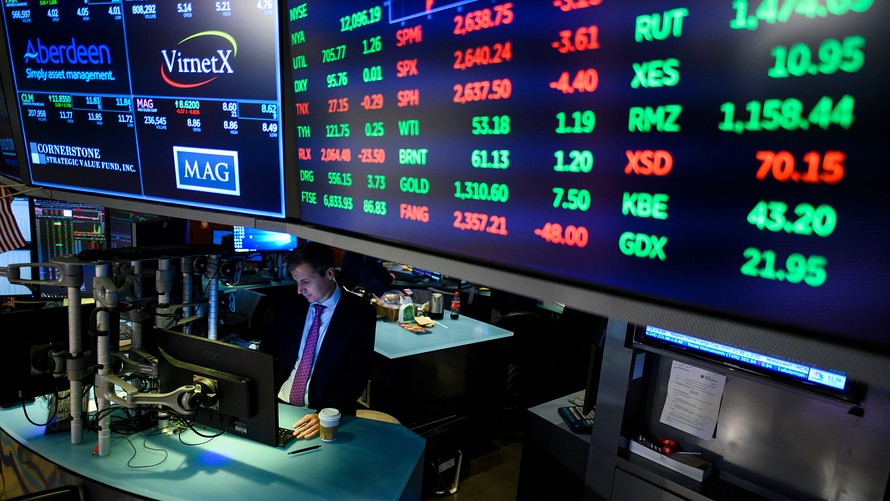This needs to be explained we are all in the stock market if we are in 401k and this being said it is real money. The Federal Reserve is dealing with inflation as a part of supply and demand as the Fed raises the rate they want to cause people to stop buying houses and stop hiring workers. It’s a shame because that only affects poor people. Not the rich as stocks fall poor people can not afford to be away from work. Here we are people have jobs and the Government wants to stop the growth by raising rates and borrowing money from rich and poor people gets more expensive. So the poor cannot get what they need and rich people cannot get what they need at a cheap price. Here we are the Government should be able to tell businesses not to raise prices when demand goes up. But that would not be free market. So the dance begins we are all involved in this in some kind of way.. The Dance begins !!!!
Stocks fell Thursday after jobs data showed the labor market is still strong amid the Federal Reserve’s interest rate hikes to tame inflation.
The Dow Jones Industrial Average fell 398 points, or 1.19%. The S&P 500 and Nasdaq Composite slipped 1.18% and 1.45%, respectively. Shares of Tesla slipped nearly 5%.
Stocks opened lower after the ADP private payrolls report showed that employers added 235,000 jobs in December, well above economist estimates. Wages also increased more than anticipated, another sign that the labor market remains hot. Later in the morning, weekly jobless claims came in below expectations and showed a drop in continuing claims.
“While we will get a better overall picture of the jobs market tomorrow, private payrolls beating expectations and jobless claims coming in below are indications that the labor market remains resilient,” said Mike Lowengart of Morgan Stanley Global Investment Office.
“These come on the heels of big-name companies announcing sizable job cuts so there is no doubt the market’s pressures are weighing on companies, but it remains to be seen when hiring will slow demonstrably,” he added.
The moves follow a choppy trading session as traders pored over a mixed bag of economic data.
November’s Job Openings and Labor Turnover, or JOLTS, report showed the job market remained strong, bolstering concerns that the Fed could continue raising interest rates as long as there remained a hot market for workers. But the ISM manufacturing index showed the sector was contracting after 30 months of expansion, which investors saw as a positive indicator that previous rate hikes had the intended impact of cooling the economy.
Meanwhile, the minutes from the Fed’s December meeting showed the central bank remained committed to higher interest rates for “some time.”
Investors will watch Thursday for more data the trade deficit and business activity. Fed speakers Raphael Bostic and James Bullard are also both slated to speak.
On Friday, investors will review the December jobs report for updated data on employment and hourly wages. Since the report could have a big impact on the Fed’s next moves, it has the potential to impact the market. Investors don’t want to see big gains in wage growth, which could signal higher inflation.


